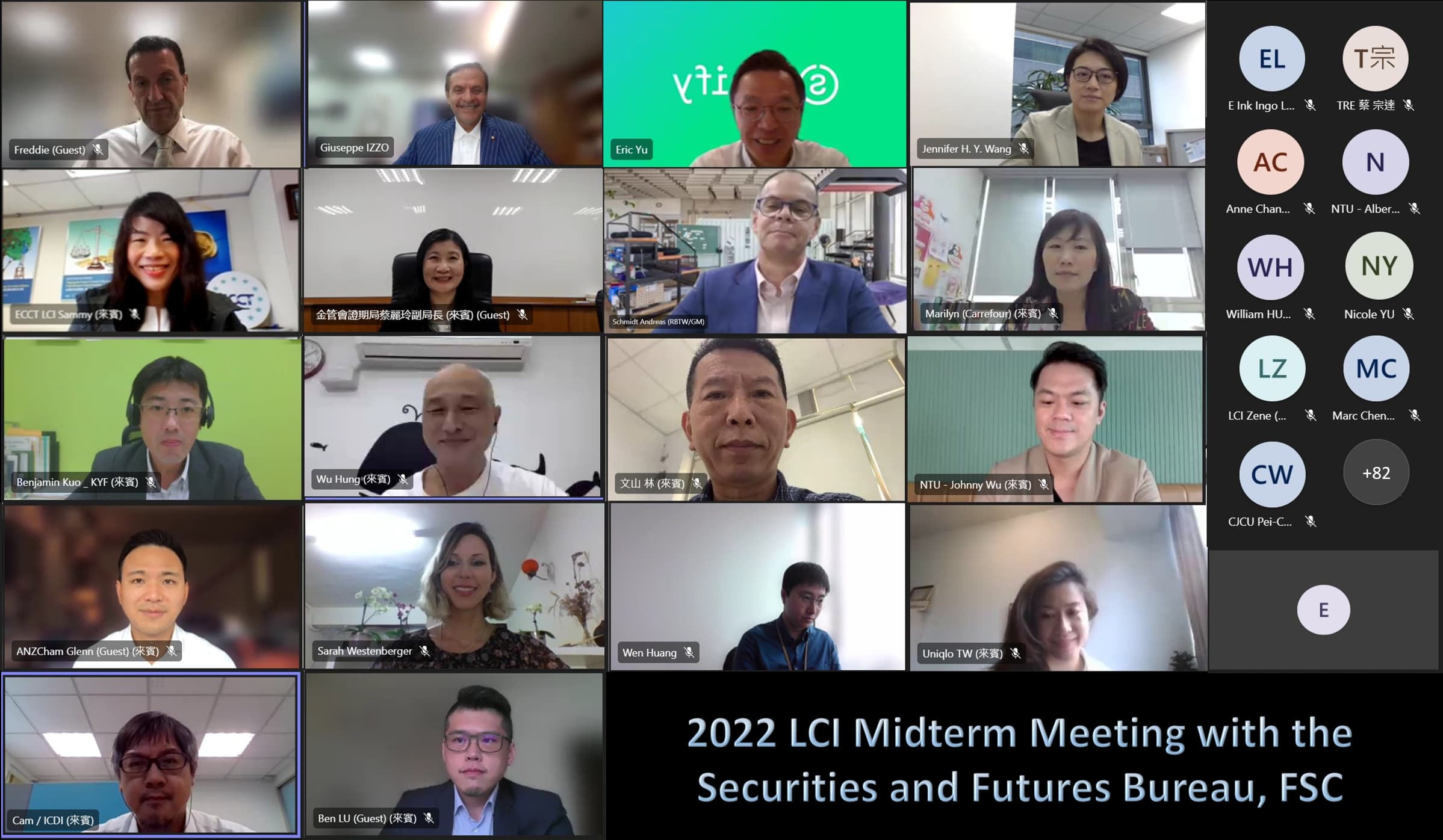SFB briefing on ESG reporting for listed companies

The ECCT's Low Carbon Initiative (LCI) invited a representative from the Securities and Futures Bureau (SFB), under the Financial Supervisory Commission (FSC) to brief members on future ESG reporting requirements for listed companies in Taiwan. In a presentation that was part of the LCI's mid-term virtual meeting, Dr Vivian Tsai (Li-ling), Deputy Director-General of SFB gave an overview of the sustainable development roadmap for listed companies.
She began by highlighting some global developments. According to the Cop 26 Climate Pact, developed countries have pledged to deliver US$100 billion in climate finance by 2023 and provide financial resources to developing nations. The Glasgow Financial Alliance for Net Zero (GFAN) now includes 450 member firms across the global financial sectors, representing more than US$130 trillion in assets under management and advice, which have committed to net zero greenhouse gas emissions across the full value chain by 2050. 137 countries, which currently account for 80% of the world's emissions, have now committed to net zero.
Taiwan has announced 12 key strategies to reach net zero, including wind and solar energy, hydrogen, power systems and energy storage, energy savings and efficiency, carbon capture, utilisation and storage (CCUS), resource recycling, carbon sinks, green lifestyle and green finance.
Among other things, the government's Green Finance Action Plan 2.0 aims to encourage companies to invest in projects that are good for sustainable development and make it easy for investors to identify companies with outstanding ESG performance.
In terms of green fundraising, according to statistics provided by Tsai, 84 green bonds have been issued with a total value of NT$231.6 billion, nine social bonds have been issued with a value of NT$18.1 billion as well as 17 sustainability bonds with a value of NT$70.1 billion. 30% of green bonds have been issued by foreign banks, 23% by Taiwan banks, 40% by local companies and 7% by foreign companies.
Financial products promoted under the Green Action Plan 2.0 include funds (such as ESG-themed funds), ETFs and insurance products (such as offshore wind insurance).
In terms of reporting requirements, listed companies with capital of NT$2 billion or above will be required to produce ESG reports by 2023. ESG reports of listed companies should follow TCFD & SASB standards (the disclosure of financially material sustainability information) by 2023. The greenhouse gas (GHG) reporting boundaries should be the same as the consolidated financial statements, in order to cover the company's overall GHG emissions.
By 2027 all listed companies should complete an inventory of their GHG emissions (the reporting boundaries should be the same as the consolidated financial statements) and by 2030 all listed companies should complete GHG emissions inventory verification (the verification boundaries should be the same as the consolidated financial statements).
It is the responsibility of each listed company to establish a governance structure and set up a unit to promote sustainable development, conduct ESG risk assessments on operations, formulate the relevant risk management policies or strategies and supervise the implementation of the activities on a quarterly basis.
For its part, the EPA is negotiating to improve the capacity (quantity and quality) of third-party verification institutions while the MOEA is helping companies to build talent to implement GHG emissions inventory and disclosure.
GHG emissions inventory taking standards should follow EPA rules, unless the facilities are not regulated by the EPA, in which case, they should follow international standards (such as ISO14064-1 and the GHG Protocol) or foreign rules.
Facilities with GHG emissions of 25,000 tonnes of CO2e or more per year will be required to complete GHG inventories while it is voluntary for others.
While climate issues will be the first priority in terms of reporting requirements, in the future more attention will be paid to ESG disclosure consistency and to scope 3 disclosures (indirect emissions from assets not controlled by the company).
